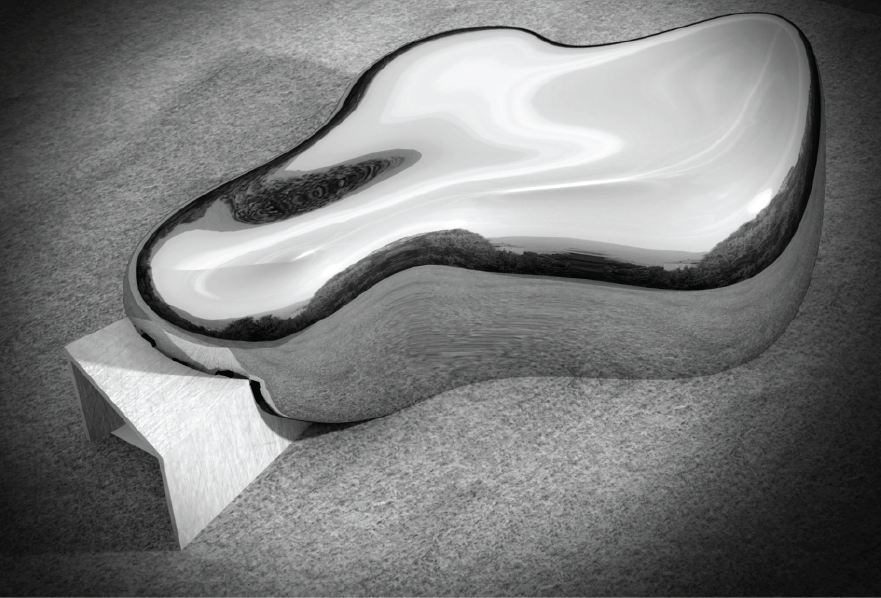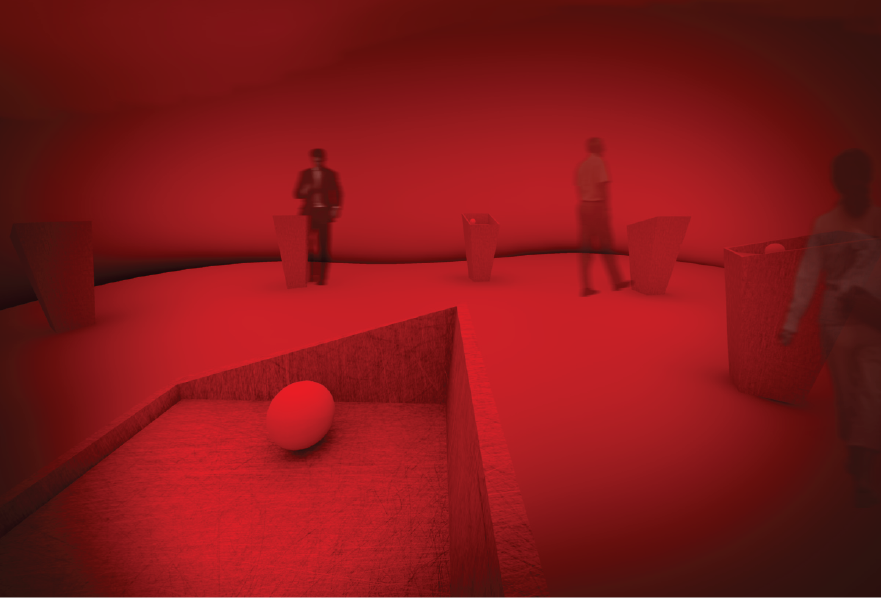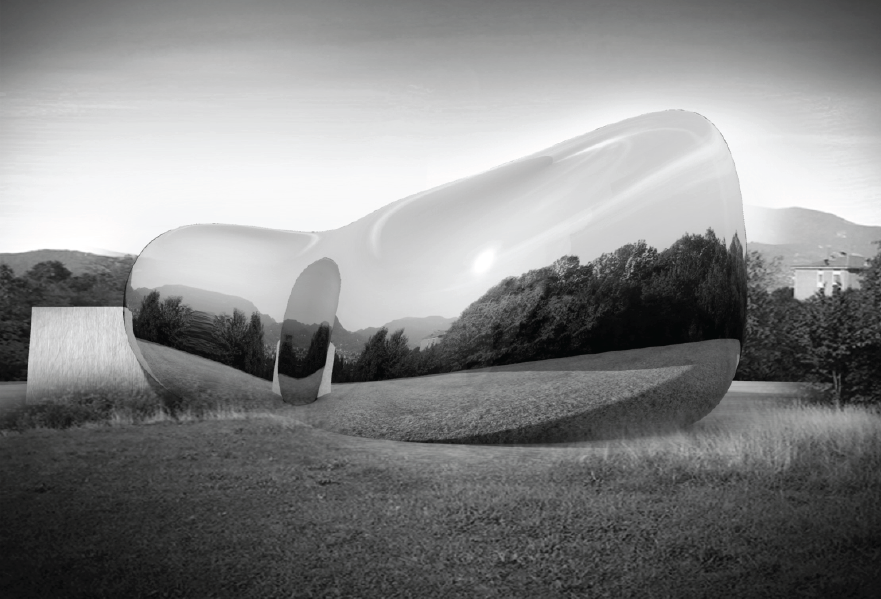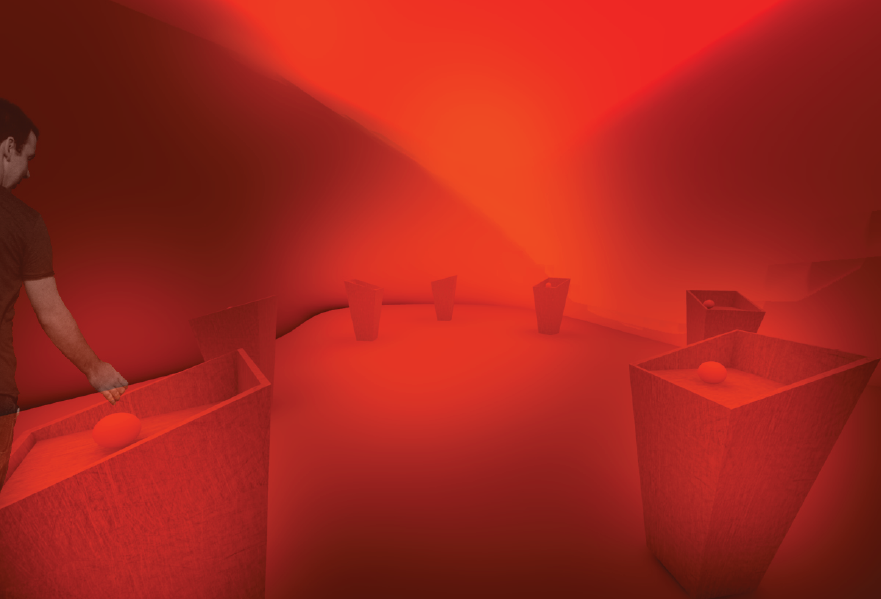

Starting from the definition itself of “silence”, it has been analysed the process with which men perceive sounds and noises, in so defining the minimal sound vibration that can be sensed: the beat of our hearts. It has then been thought a place where to live the experience of silence through the listening of the heart’s beat. I have taken in consideration a study completed by three scholars of the University of Michigan and University of Washington that, after having studied the cardiac arrhythmia that a ected the composer Ludwig Van Beethoven, have argued that this medical condition was largely in uenced by his deafness (perpetual silence) and that it had strong e ects on many of the melodic variations present in his works, written in the tonality of Bb.
Sound, rhythm, colour and shape are part of the elements that characterize a space com- pletely re ecting in its external part (utopia of silence), while internally it transforms itself to a formal level in order to optimally follow the di usion of sound waves, emitted repro- ducing the heart beat of the users during the performance that they wrote and acted themselves. Resonating chambers play in the Bb scale the “Arhythmic Sonata for Hearts”, composed by measuring, transforming into sound and reproducing the heart beat of seven di different people simultaneously, in such a way that permitted the creation of an outright melody, always different, but in no way random.








